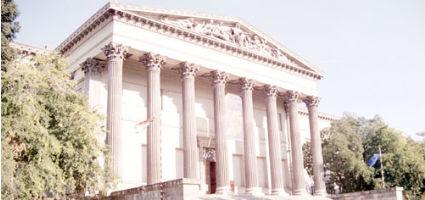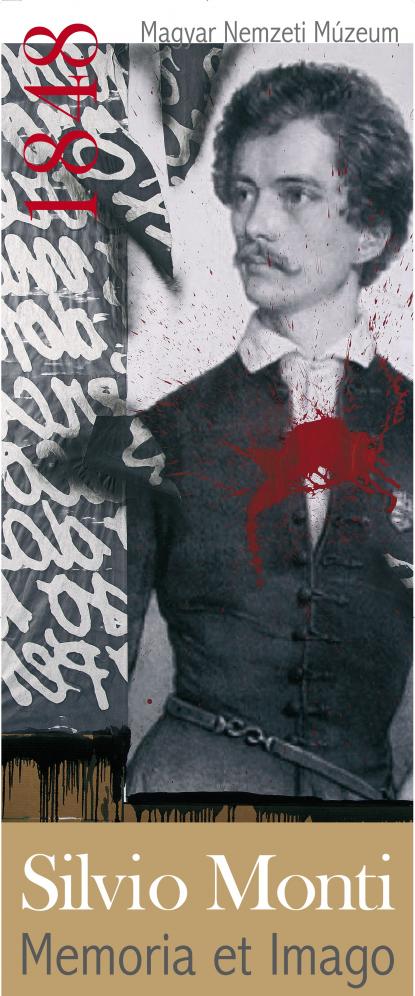2024. May 5. Sunday
Hungarian National Museum - Budapest
 |
Address: 1088, Budapest Múzeum körút 14-16.
Phone number: (1) 338-2122
E-mail: info@hnm.hu
Opening hours: Tue-Sun 10-18
|
The exhibition has closed for visitors.
2013.10.16. - 2013.12.31.
Museum tickets, service costs:
|
Ticket for adults
|
1100 HUF
|
|
|
Ticket for students
|
550 HUF
|
|
|
Ticket for soldiers
|
550 HUF
|
|
|
Ticket for pensioners
|
550 HUF
|
|
|
Ticket for families
(2 adults + children)
|
1150 HUF
|
/ family
|
|
Individual guide
|
400 HUF
|
/ capita
|
|
Group guide
(max. 5 people)
|
1800 HUF
|
/ group
|
|
Group guide
(11-15 people)
|
6000 HUF
|
/ group
|
|
Group guide
(max. 15 people)
|
5500 HUF
|
/ group
|
|
Group guide
(16-25 people)
|
9700 HUF
|
/ group
|
|
Group guide
(1-5 people)
|
1500 HUF
|
/ capita
|
|
Group guide
(6-10 people)
|
13000 HUF
|
/ group
|
|
Group guide
(11-15 people)
|
16000 HUF
|
/ group
|
|
Group guide
(16-25 people)
|
24000 HUF
|
/ group
|
|
Group guide for students
(max. 25 people)
|
4500 HUF
|
/ group
|
|
Group guide for students
(max. 15 people)
|
6000 HUF
|
/ group
|
|
Group guide for students
(max. 25 people)
|
12000 HUF
|
/ group
|
In 2013, Italy and Hungary both arrange a cultural season to reflect the culture of the other country. In preparation, the Ministry of Foreign Affairs asked the Hungarian National Museum to participate in the expansion of programmes. When devising the cooperation, the idea was formulated that a prominent contemporary Italian artists whose work in some way reflect and are in dialogue with the works one of the most exciting chapters of the 19th century in Hungarian and Italian past namely, common aspirations for freedom would be displayed at the museum historical exhibition hall. The choice fell on the artist Silvio Monti.

The exhibition is organized at three locations simultaneously: the Pulszky Hall, the Rotunda and the Dome. The first two locations mostly show the selected pieces of the painter and sculptural works of art by the artist, which authentically evoke momentums of imagery and figurality with which Monti begins a discourse on contemporary art of our time.
The dome presents large-scale sculptures (spiral labyrinth ) with components of panels and rolls ," in other words texts from the 19th century revolutionary movements, and also " faces ", historic portraits of the main characters of the era. The texts on the panels become landmarks in the age, catchwords. They are emblematic texts that were inspired by the Bible and biblical parables. Faces of the creators also appear, including Giuseppe Mazzinito and Goffredo Mamelito, Lajos Kossuth and Sándor Petofi. The texts on the one hand are "subjective reading of the simple past", on the other hand, are in a form which can be considered as kind of reinterpreted experiment .
The panels with the text and images are arranged in a kind of maze. Through the Door we enter into the community 's past the, then travels to the past and in the end a real surprise is waiting for her or him: a mysterious object, the message of which is somehow greater than time and physical space . At this point, dialogue begins between the viewer and his or her own thoughts. The labyrinth was built by the artist himself. Specific spatial structure of the building enforces the specific Italian -Hungarian dialogue that was designed by the architect Michael Pollack inspired by the Pantheon in Rome at that time.

The exhibition is organized at three locations simultaneously: the Pulszky Hall, the Rotunda and the Dome. The first two locations mostly show the selected pieces of the painter and sculptural works of art by the artist, which authentically evoke momentums of imagery and figurality with which Monti begins a discourse on contemporary art of our time.
The dome presents large-scale sculptures (spiral labyrinth ) with components of panels and rolls ," in other words texts from the 19th century revolutionary movements, and also " faces ", historic portraits of the main characters of the era. The texts on the panels become landmarks in the age, catchwords. They are emblematic texts that were inspired by the Bible and biblical parables. Faces of the creators also appear, including Giuseppe Mazzinito and Goffredo Mamelito, Lajos Kossuth and Sándor Petofi. The texts on the one hand are "subjective reading of the simple past", on the other hand, are in a form which can be considered as kind of reinterpreted experiment .
The panels with the text and images are arranged in a kind of maze. Through the Door we enter into the community 's past the, then travels to the past and in the end a real surprise is waiting for her or him: a mysterious object, the message of which is somehow greater than time and physical space . At this point, dialogue begins between the viewer and his or her own thoughts. The labyrinth was built by the artist himself. Specific spatial structure of the building enforces the specific Italian -Hungarian dialogue that was designed by the architect Michael Pollack inspired by the Pantheon in Rome at that time.
